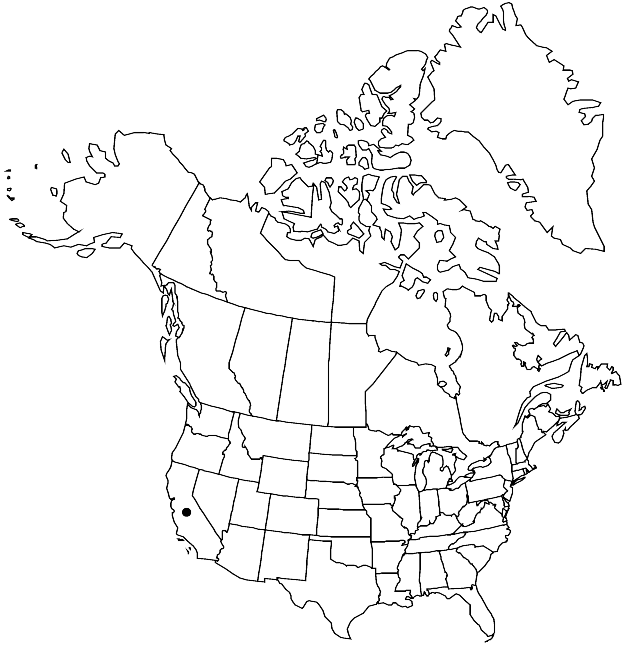Difference between revisions of "Streptanthus hesperidis"
Erythea 1: 14. 1893.
FNA>Volume Importer |
FNA>Volume Importer |
||
| Line 11: | Line 11: | ||
|name=Pleiocardia hesperidis | |name=Pleiocardia hesperidis | ||
|authority=(Jepson) Greene | |authority=(Jepson) Greene | ||
| + | |rank=species | ||
}} {{Treatment/ID/Synonym | }} {{Treatment/ID/Synonym | ||
|name=Streptanthus breweri var. hesperidis | |name=Streptanthus breweri var. hesperidis | ||
|authority=(Jepson) Jepson | |authority=(Jepson) Jepson | ||
| + | |rank=variety | ||
}} | }} | ||
|hierarchy=Brassicaceae;Brassicaceae tribe Thelypodieae;Streptanthus;Streptanthus hesperidis | |hierarchy=Brassicaceae;Brassicaceae tribe Thelypodieae;Streptanthus;Streptanthus hesperidis | ||
| Line 39: | Line 41: | ||
-->{{#Taxon: | -->{{#Taxon: | ||
name=Streptanthus hesperidis | name=Streptanthus hesperidis | ||
| − | |||
|authority=Jepson | |authority=Jepson | ||
|rank=species | |rank=species | ||
| Line 54: | Line 55: | ||
|publication year=1893 | |publication year=1893 | ||
|special status= | |special status= | ||
| − | |source xml=https://jpend@bitbucket.org/aafc-mbb/fna-data-curation.git/src/ | + | |source xml=https://jpend@bitbucket.org/aafc-mbb/fna-data-curation.git/src/f50eec43f223ca0e34566be0b046453a0960e173/coarse_grained_fna_xml/V7/V7_1241.xml |
|tribe=Brassicaceae tribe Thelypodieae | |tribe=Brassicaceae tribe Thelypodieae | ||
|genus=Streptanthus | |genus=Streptanthus | ||
Revision as of 22:13, 16 December 2019
Annuals; glabrous. Stems unbranched or branched basally, 1–3 dm. Basal leaves (soon withered); not rosulate; shortly petiolate; blade broadly obovate, 2–3 cm, margins coarsely and bluntly dentate distally. Cauline leaves: blade (mostly yellowish), ovate to lanceolate, 1–4 cm × 5–15 mm, (smaller distally), base amplexicaul, margins often entire. Racemes ebracteate, (secund, rachis flexuous). Fruiting pedicels divaricate-ascending, (straight), 1–2 mm. Flowers: calyx urceolate; sepals yellow-green, (ovate-lanceolate), 5–8 mm, keeled, (apex recurved or flaring); petals whitish (with purplish veins), 6–8 mm, blade 2–3 × 1–1.3 mm, margins not crisped, claw 4–5 mm, about as wide as blade; stamens in 3 unequal pairs; filaments: abaxial pair (connate 1/2 their length), 3–5 mm, lateral pair 2–3.5 mm, adaxial pair (connate entire length, recurved), 6–9 mm; anthers: abaxial and lateral pairs fertile, 1.7–2.5 mm, adaxial pair sterile, 0.7–1.2 mm; gynophore 0.2–0.5 mm. Fruits divaricate-ascending, somewhat torulose, nearly straight to, rarely, arcuate, flattened, 3–6 cm × 0.9–1.1 mm; valves each with obscure midvein; replum straight; ovules 26–38 per ovary; style 0.1–0.3 mm; stigma entire. Seeds oblong, 1.2–1.5 × 0.6–0.8 mm; wing (0–)0.05–0.1 mm wide, distal. 2n = 28.
Phenology: Flowering May–Jul.
Habitat: Serpentine barrens and associated openings in chaparral-oak woodland and cypress woodland
Elevation: 200-600 m
Discussion
Of conservation concern.
Streptanthus hesperidis is known from Lake and Napa counties. R. E. Buck et al. (1993) reduced it to a variety of S. breweri, but the two are sufficiently distinct to be recognized as independent species. It differs from S. breweri by having flexuous (versus straight) raceme rachises, yellowish (versus glaucous green) foliage, smaller petals (6–8 versus 8–12 mm), and often straight (versus often arcuate) fruits.
Selected References
None.
